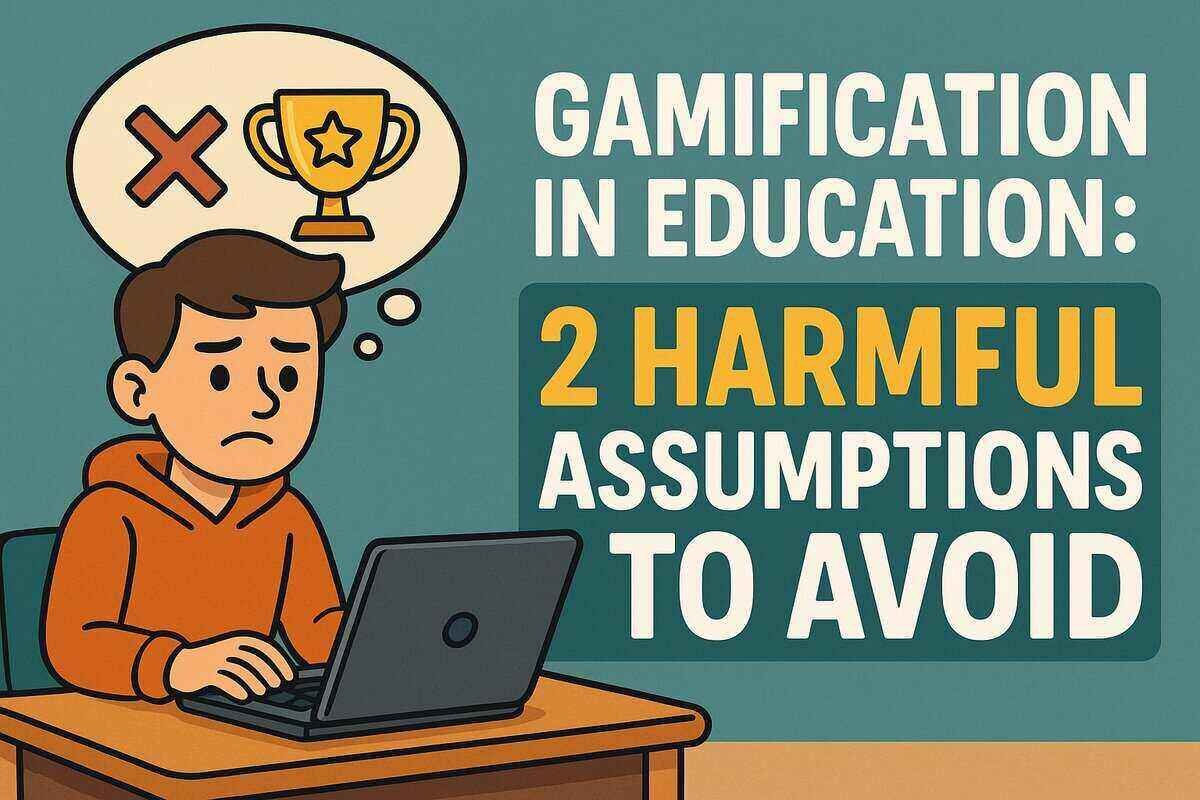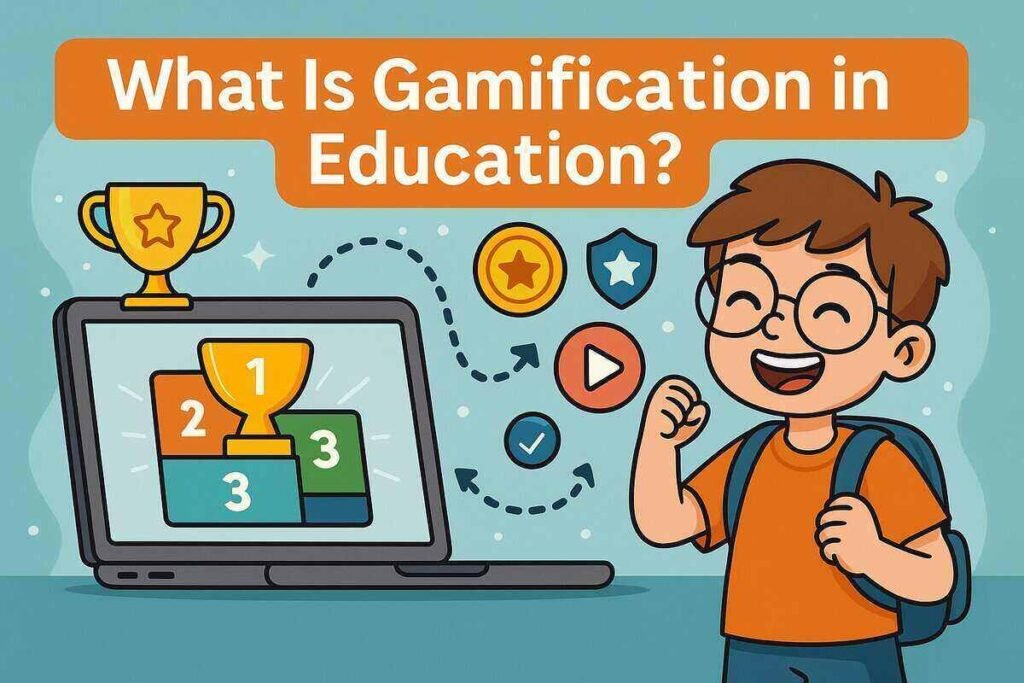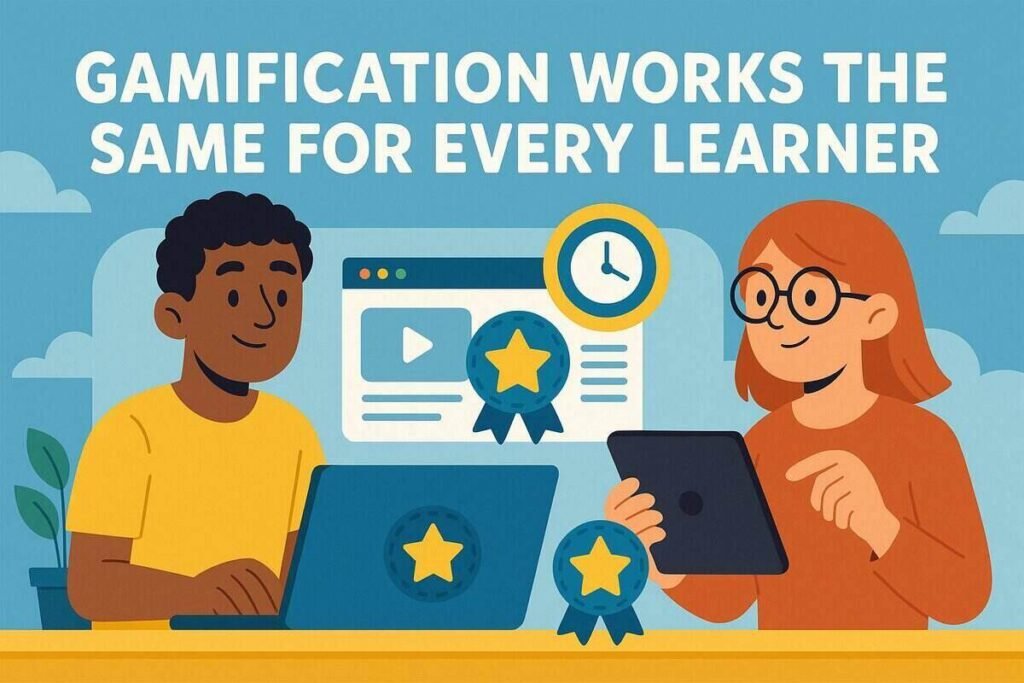Physical Address
304 North Cardinal St.
Dorchester Center, MA 02124
Physical Address
304 North Cardinal St.
Dorchester Center, MA 02124

Think back to a time when learning felt more like a chore than a journey. Maybe it was a dry textbook, a never-ending lecture, or a test that felt more like a guessing game than a measure of your understanding. Then suddenly, a quiz game pops up, or a leaderboard appears on the screen—and everyone lights up. That’s gamification in action.
Gamification in education has exploded in popularity, offering the promise of increased engagement, motivation, and even academic performance. But with all the buzz and adoption, it’s easy to fall into unexamined beliefs. As a result, some of the assumptions about gamification in education may actually hinder progress more than they help.
In this article, we’ll address 2 harmful assumptions about gamification in education that could be impacting how you design, implement, or evaluate learning experiences.

Gamification refers to the use of game-like elements—such as points, badges, levels, and rewards—in non-game contexts like learning environments. It’s not about playing actual video games in class, but rather applying game principles to make learning more interactive and enjoyable.
While these tools are often beneficial, problems arise when assumptions replace critical thinking. Let’s unpack two of the most misleading beliefs.
It’s easy to believe that adding game mechanics automatically boosts engagement. After all, students love games, right?
Not all students are motivated by competition or external rewards. In fact, some students feel anxious or demotivated when rankings and leaderboards dominate the classroom experience.
According to a study published by the American Psychological Association, extrinsic rewards may undermine intrinsic motivation in some learners. If students only participate for badges or points, they may lose sight of the deeper value of learning.
Conclusion: You should consider whether gamification enhances or distracts from authentic engagement. Relying solely on external incentives might backfire.

Another myth is that gamification benefits all learners equally. It’s a one-size-fits-all solution, right?
Learners are diverse. Some thrive on competition, others prefer collaboration. Some are tech-savvy, while others may feel overwhelmed by digital interfaces.
| Learner Type | Gamification Challenge |
|---|---|
| Introverted students | May dislike public leaderboards |
| Neurodivergent learners | Can find flashy interfaces overstimulating |
| English language learners | May struggle with fast-paced quiz platforms |
According to research from Harvard Graduate School of Education, effectiveness depends on how well gamified elements are matched to learners’ needs, not just the presence of those elements.
Conclusion: Personalization is key. Avoid assuming that all learners will benefit equally from the same gamified system.
To make gamification genuinely impactful, it needs to be:
It’s the use of game-like elements—points, levels, rewards—in learning environments to enhance motivation and participation.
Not always. If poorly implemented, it can create superficial engagement or disadvantage certain learner types.
While widely used in K-12, gamification can also benefit adult learners when adapted appropriately. Consider learner maturity and goals.
Start small. Use simple tools like digital quizzes or badges, and monitor how students respond. Refine based on feedback.
Yes. Risks include over-reliance on extrinsic motivation, increased competition anxiety, and distraction from core learning goals.
Gamification in education isn’t inherently good or bad—it’s a tool. And like any tool, its effectiveness depends on how thoughtfully you use it. The two harmful assumptions about gamification in education we explored—believing it always increases engagement and works the same for every learner—can lead to misguided implementations.
Approach gamification with curiosity, empathy, and flexibility. Evaluate its impact not just by how animated your students seem, but by how deeply they understand and apply what they’ve learned.
If this article sparked new ideas or reflections, consider sharing it or exploring more evidence-based insights on our blog. Let’s create smarter learning environments together.